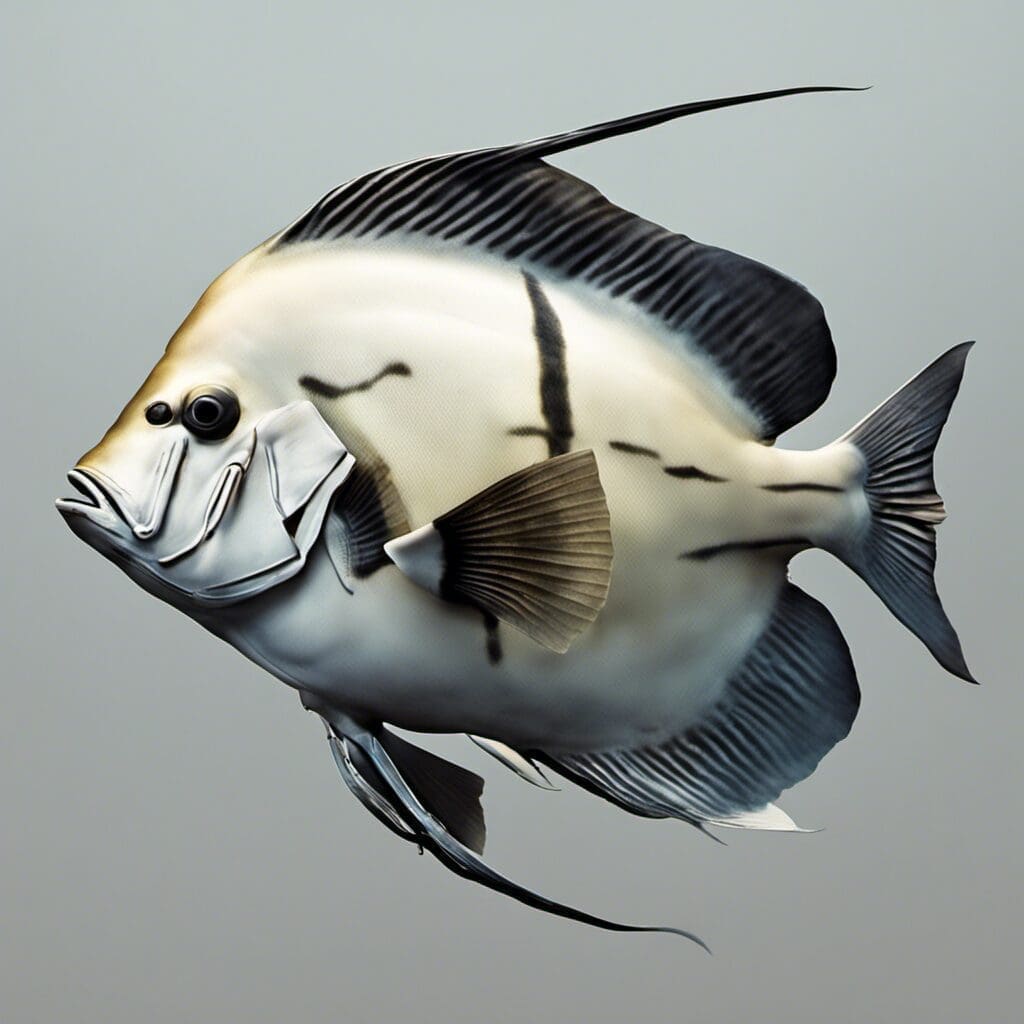Introduction
The Spadefish, often referred to as Angelfish, belongs to the family Ephippidae which is referred as the Spadefish family. Spadefish are popular among divers and recreational anglers for their distinct shape, friendly nature, and of course, their delectable taste.
Conservation Status
The Spadefish is currently listed as Least Concern (LC) on the conservation status. Sustained efforts by conservationists, including strict regulations on fishing and habitat preservation, have contributed to their stable population.
Statistics
| Measurement | Average | Range |
|---|---|---|
| Length | 35 cm | 20 – 45 cm |
| Weight | 2 kg | 1 – 3 kg |
| Lifespan | 8 years | N/A |
Distribution
Spadefish are primarily found in tropical and subtropical waters worldwide. They are known to migrate en masse to warmer waters during colder months. The Spadefish is popular along the coasts of the eastern and western Atlantic, Gulf of Mexico, and the Caribbean.
Habitats
- Water type: Marine, estuarine
- Depth range: 10 – 35 meters
- Temperature range: 68 – 82 °F (20 - 28 °C)
When and Where to See
Spadefish can be commonly seen from late spring to early fall, generally during daylight hours. They are fond of structure and are frequently found near reefs, piers, and shipwrecks.
Best Fishing Locations
Some of the top locations for Spadefish include the Chesapeake Bay, the Gulf of Mexico, and the Florida Keys. If specific locations are unknown, look for man-made structures in shallow, warm waters like piers, bridges, and buoys.
How to Catch
- Preferred bait or lures: Shrimp, squid, small baitfish
- Fishing techniques: Chumming, float fishing
- Best time: Early morning or late afternoon, particularly during summer months
Identification Guide
The Spadefish is best identified by its deep, compressed body, small mouth, and silverly-white body with vertical black bands. A similar species is the Sheepshead, but it has a more elongated body with distinct grey stripes.
Culinary
The Spadefish is valued as a food fish, noted for its light, flaky meat and mild flavor. It can be prepared in a variety of ways, and is popular in soups, broths, and grilled dishes. Here’s a link to some delicious spadefish recipes.
Additional Information
Spadefish are known for their schooling behavior, often found in large aggregations around structure. Their primary predators include larger species of fish and sharks. Unlike many other species, spadefish pose no known threats to humans with most interactions occurring during recreational fishing experiences. For now, there’s no specific cultural or historical significance associated with the Spadefish.
References and Further Reading
Further information about Spadefish can be found at Fishbase, National Marine Fisheries Service and publications such as Field Guide to Fishes: North Atlantic Coast by C. Lavett Smith.

